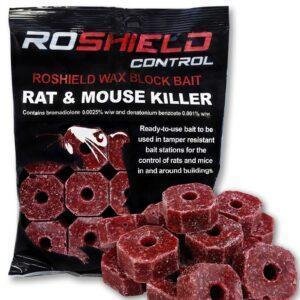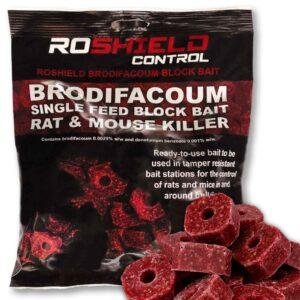Rodenticide (commonly known as poison or bait) is a pesticide for eradicating rats and mice within and around buildings. If used correctly, complete control of rodents within the building can be gained quickly and easily. It’s important to note the risks involved with rodenticide, especially to non-target animals within the areas of treatment.
How much bait do I need to control my infestation?
The type of rodenticide kit required to control an active rat infestation will vary depending on the population’s size, competition for a food source, localised resistance and the general location within the UK.
As a starter, we recommend placing between 2 & 4 tamper-resistant bait stations baited with 150g of rodenticide per box, as this will control most active infestations. Additional bait is not uncommon for larger populations.
What type of bait should I use?
The type of bait is generally not as crucial with rats as they consume most feeds with little fuss. When baiting outside or in damp environments, we recommend blocks; if baiting within towns, we recommend pasta and whole wheat as an excellent all-around control method. All bait, by law, must be used within a tamper-resistant bait station.
What active ingredient should I buy?
- Difenacoum and bromadiolone are multi-feed baits with a proven record of success in the control of rats. However, resistance is a growing problem within some areas of the country, mainly Reading, Kent & Bolton. A handy resistance map can be viewed here. We recommend using this type of bait for the majority of infestation controls.
- Brodifacoum is a single-feed bait with no known resistance and should be used as an alternative to the above baits. Secondary poisoning is a particular risk, and extreme caution should be undertaken to prevent non-target animals from accessing the bait. Under-baiting, a population, can cause bait shyness, so it’s essential to use this as a backup ‘reserve’ bait to control stubborn ongoing problems.












